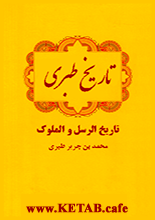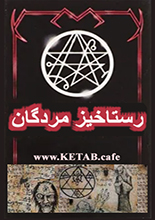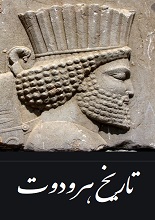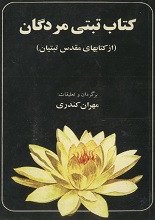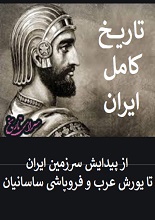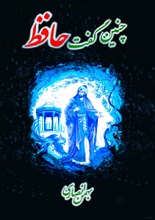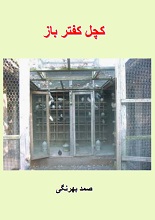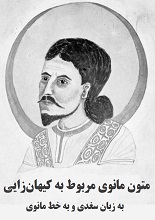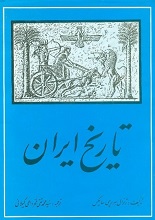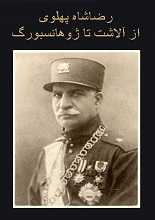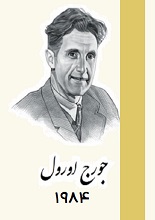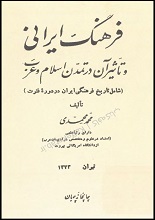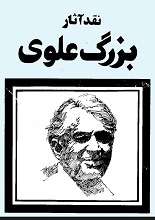The Royal Correspondence of the Assyrian Empire, translated into English with transliteration and commentary by Leroy Waterman, is an invaluable scholarly work that opens a unique window into the political, social, and cultural life of one of the ancient Near East’s most powerful empires. The Assyrian Empire, which reached its peak between the 9th and 7th centuries BCE, was renowned for its sophisticated administration, military prowess, and complex diplomatic relations. Through royal letters and official correspondence preserved in cuneiform tablets, Waterman provides readers and researchers with a detailed understanding of the mechanisms of power, communication, and governance in ancient Assyria.
This book is not merely a translation; it is an academic gateway that combines meticulous transliteration with expert commentary, making these ancient texts accessible to a wide audience of historians, linguists, and enthusiasts of Mesopotamian studies. By examining these letters, readers gain insight into the strategies of kings, the intricacies of international diplomacy, and the daily concerns of rulers and their administrators.
Historical Background of the Assyrian Empire
The Assyrian Empire, located in what is now northern Iraq and parts of Syria, Turkey, and Iran, was one of the most influential civilizations of the ancient world. Emerging around the 25th century BCE as a city-state centered on Ashur, it gradually expanded through military conquest and political alliances to become a dominant power in Mesopotamia. Its kings, including Tiglath-Pileser III, Sargon II, and Ashurbanipal, were not only military leaders but also shrewd diplomats who maintained complex networks of communication across vast territories.
The preservation of royal correspondence offers a rare glimpse into this empire’s inner workings. Unlike chronicles and inscriptions, which often glorify kingship, letters present a more nuanced perspective: they reveal negotiation tactics, the practical challenges of governance, and the expectations of loyalty and obedience from subordinates. Waterman’s translation brings these documents to life, allowing modern readers to engage with the historical voices of Assyrian rulers and officials.
دانلود چند کتاب دیگر:
تاریخ ایران و شرق باستان
تاریخ کتزیاس
تاریخ دنیای قدیم
مکاتبات سلطنتی امپراطوری آشور
Content Overview
Waterman’s work is meticulously structured to include three primary components:
-
Translation into English – Each letter is rendered in precise, readable English, maintaining the tone and intent of the original Assyrian text. This allows non-specialists to access the content while preserving scholarly accuracy.
-
Transliteration of the Text – For students of cuneiform and Assyriology, Waterman provides transliteration, which reproduces the original script in Latin characters. This feature is essential for linguistic analysis, comparative studies, and verifying translation accuracy.
-
Commentary – Every letter is accompanied by detailed commentary, explaining historical context, political references, and linguistic nuances. The commentary enhances comprehension, particularly regarding Assyrian administrative terminology, ceremonial language, and diplomatic etiquette.
The book covers a wide range of topics, including letters from kings to provincial governors, correspondence with vassal states, and communication with foreign powers. It also includes directives on military campaigns, economic administration, and religious observances, reflecting the multifaceted responsibilities of Assyrian rulers.
Scholarly Importance
The significance of Royal Correspondence of the Assyrian Empire extends beyond translation. Leroy Waterman’s work serves as a cornerstone for modern Assyriology and Near Eastern studies. It allows researchers to:
-
Understand Assyrian Diplomacy: The letters illustrate how Assyrian kings negotiated alliances, demanded tribute, and managed relations with neighboring states. They reveal subtleties in language that convey authority, persuasion, and negotiation strategies.
-
Analyze Administrative Systems: Correspondence with provincial governors, officials, and military commanders offers a detailed view of bureaucratic procedures, tax collection, and governance methods.
-
Explore Social and Cultural Norms: Personal letters reveal the values, religious beliefs, and social hierarchies of the Assyrian elite. They also illuminate the expectations placed upon subordinates and the complex etiquette governing royal communication.
In addition, Waterman’s transliterations provide a bridge for students and scholars who are not fluent in Akkadian but wish to study the language systematically. By presenting both the original and the translated text, the book encourages comparative linguistic study and promotes a deeper understanding of ancient Near Eastern communication.
See Also:
From Cyrus to Alexander
Persia and the Bible
Media and Persia
Key Themes in the Letters
Several recurring themes emerge throughout the royal correspondence:
-
Power and Authority: Assyrian kings consistently emphasized their supremacy in correspondence. Letters often remind recipients of the king’s position and the consequences of disobedience, reflecting a centralized system of power.
-
Loyalty and Governance: Correspondence with governors and vassals frequently includes instructions for reporting, accountability, and maintaining order, demonstrating the delicate balance between autonomy and control in provincial administration.
-
Military Campaigns: Many letters contain orders for troop movements, strategies for sieges, and instructions for provisioning armies. These letters provide unique insight into the organization and logistical sophistication of Assyrian military campaigns.
-
Religion and Ritual: Assyrian kings often invoked divine authority in their letters, linking governance to the will of gods such as Ashur and Ishtar. Religious references underscored the legitimacy of the king’s rule and provided guidance for ceremonial practices.
-
Diplomatic Negotiation: Letters addressed to foreign rulers reveal Assyria’s diplomatic acumen, showing the interplay of diplomacy, coercion, and alliance-building in the ancient Near East.
Methodology and Translation Approach
Waterman’s approach is notable for its rigorous scholarly methodology. His translation aims to preserve:
-
Accuracy of Meaning: Each word is carefully rendered to reflect the nuance of the original Akkadian text.
-
Contextual Clarity: Waterman provides explanations for idiomatic expressions, historical references, and obscure terms, ensuring that readers can fully understand the correspondence.
-
Readable English Style: Despite the technical nature of the material, the translation maintains a readable narrative that appeals to both scholars and interested general readers.
The inclusion of transliteration is particularly significant for advanced students of Assyriology. It allows for textual analysis, phonetic reconstruction, and engagement with the original linguistic structures, which are essential for deep academic research.
Contributions to Assyriology
Royal Correspondence of the Assyrian Empire is a vital reference work for anyone studying the ancient Near East. Its contributions include:
-
Primary Source Accessibility: By making these texts available in English, Waterman democratizes access to material previously restricted to specialists fluent in Akkadian.
-
Historical Reconstruction: The letters provide essential evidence for reconstructing Assyrian political history, administrative practices, and foreign relations.
-
Linguistic Study: The combination of translation and transliteration supports philological research and the study of Akkadian grammar and vocabulary.
-
Educational Value: Students, educators, and history enthusiasts gain an authentic insight into the inner workings of an empire that shaped the course of Near Eastern civilization.
Moreover, Waterman’s commentary contextualizes the letters within broader historical events, allowing readers to correlate correspondence with known political, military, and religious developments. This enhances the understanding of Assyria not only as a military power but also as a sophisticated bureaucratic and cultural civilization.
Why This Book Matters for Modern Readers
While the Assyrian Empire existed over 2,500 years ago, the lessons embedded in these letters remain relevant. They reveal universal themes of leadership, governance, diplomacy, and communication that resonate even today. Understanding how rulers maintained authority, balanced power, and communicated across vast territories offers timeless insights into human organization, political strategy, and cultural continuity.
For general readers interested in ancient history, this book provides an accessible gateway to the lives and minds of Assyrian kings and officials. For scholars and students, it is an indispensable resource that combines original texts, precise translation, and critical commentary. The dual-language approach ensures that the material serves multiple purposes: academic study, historical exploration, and linguistic analysis.
About Leroy Waterman
Leroy Waterman was a distinguished Assyriologist and scholar of the ancient Near East, recognized for his rigorous translations and contributions to understanding Mesopotamian culture and administration. His work on Royal Correspondence of the Assyrian Empire reflects his lifelong dedication to making primary sources accessible while preserving their scholarly integrity. Waterman’s meticulous attention to detail, combined with his clear and readable English translations, ensures that this work remains a critical resource for both academic and general audiences.
Download Royal Correspondence of the Assyrian Empire PDF
Royal Correspondence of the Assyrian Empire by Leroy Waterman stands as a monumental achievement in the field of Assyriology. By translating and commenting on these ancient letters, Waterman opens a direct channel to the political, administrative, and social fabric of one of the world’s earliest empires. Readers gain a rare opportunity to hear the voices of Assyrian rulers, officials, and diplomats, offering a vivid portrait of governance, diplomacy, and daily life in the ancient Near East.
This book is not only a scholarly reference but also a gateway for anyone fascinated by ancient history, Mesopotamian civilization, and the enduring human themes of leadership, communication, and cultural expression. Whether for academic research, historical curiosity, or personal enrichment, Waterman’s work remains an essential addition to the library of every Assyriology enthusiast.
Royal Correspondence of the Assyrian Empire provides an unparalleled view into the governance, diplomacy, and social life of ancient Assyria. Through Waterman’s precise English translations, transliterations, and detailed commentary, readers can explore the strategies, challenges, and daily practices of Assyrian rulers. This work remains a vital resource for historians, linguists, and anyone intrigued by the legacy of one of history’s most influential empires.
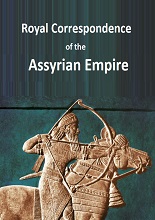
برای دانلود این کتاب، ابتدا باید عضو سایت بشوید.
پس از عضویت، لینک دانلود این کتاب و همهی کتابهای سایت برای شما فعال میشوند.
(قبلا عضو شدهاید؟ وارد شوید)
